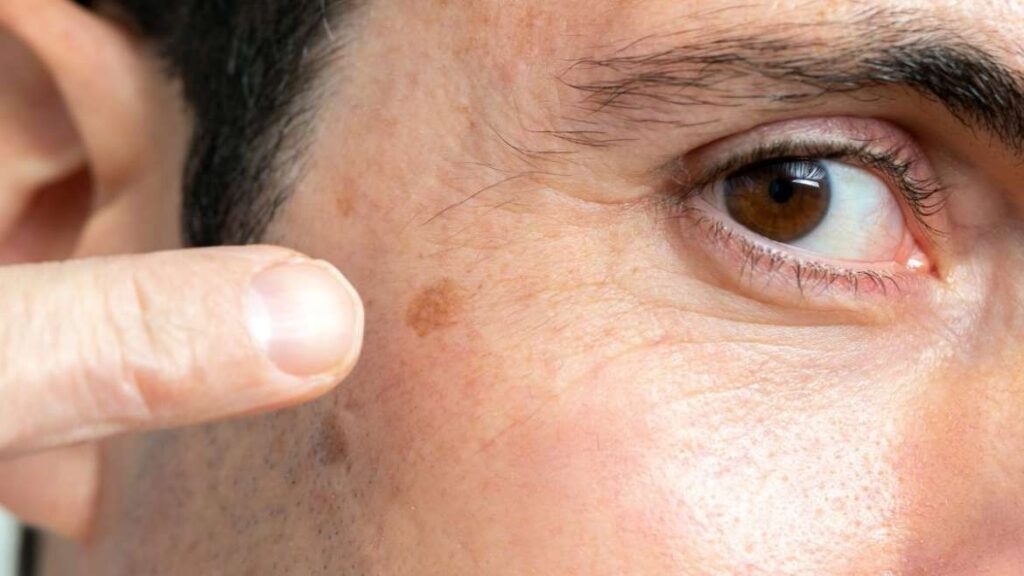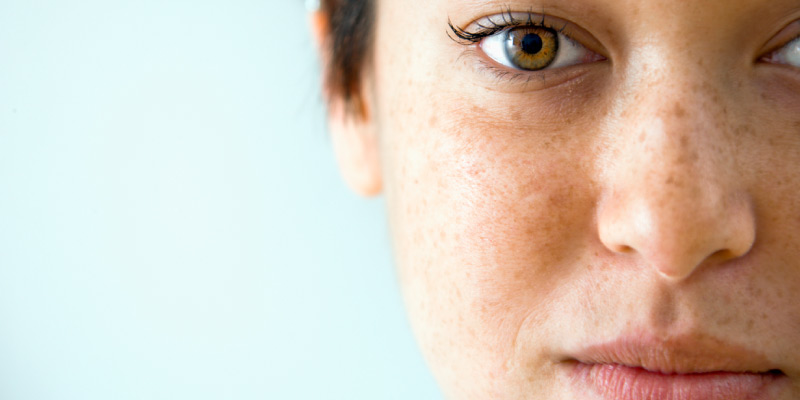The human body is a remarkable masterpiece, capable of adapting and responding to the ever-changing environment.
One fascinating aspect of our physiology is the ability of our skin to darken in response to various factors. In this article, we will delve into the captivating world of skin pigmentation and explore the mechanisms behind the darkening of the skin.
The Power of Melanin: The Skin’s Natural Protector
At the heart of the skin’s darkening process lies melanin, a pigment responsible for the coloration of our hair, eyes, and skin.

Melanin acts as a natural shield, protecting our skin from the harmful effects of ultraviolet (UV) radiation. When exposed to sunlight, specialized cells in the skin called melanocytes produce melanin, which is then distributed to nearby skin cells, creating a darker complexion.
Sun-Kissed Glow: Tanning and its Mechanisms
One of the most well-known causes of skin darkening is tanning. When exposed to UV radiation, our bodies respond by increasing melanin production.
This increase in melanin serves as a defense mechanism, absorbing and dispersing the UV radiation to minimize damage to the skin cells’ DNA. As a result, our skin develops a golden hue, commonly referred to as a tan. However, it is important to note that excessive exposure to UV radiation can lead to sunburn and other harmful effects on the skin.
The complex relationship between skin and sunlight has long fascinated me. As a child, I remember laying out in the summer sun for hours, hoping to achieve the deepest tan. Back then, darker skin seemed desirable – a sign that you had spent plenty of fun days at the beach or by the pool. It never occurred to me that all that exposure could have long term consequences.
These days, we know more about how ultraviolet (UV) radiation from the sun interacts with our skin on a cellular level. When UV rays hit our skin, they can damage DNA in skin cells. In response, our bodies produce more melanin – the pigment that gives skin its color.
Increased melanin provides protection by absorbing more UV rays and reducing further DNA damage. This is what causes our skin to tan or darken after sun exposure.
On a superficial level, tanning makes skin look healthier. The darker pigmentation masks skin imperfections and evens out tone and texture. Psychologically, tans were also tied to leisure and vacation time. However, we now understand that this darkening mechanism comes with risks. Repeated UV damage over years and decades can lead to premature skin aging as well as potentially deadly skin cancers. Melanin helps, but it can only do so much to counteract the harmful effects of prolonged sun exposure.

For these reasons, public health messages shifted to emphasize sun protection over tanning.
Dermatologists recommend limiting UV exposure, especially during peak hours, and regularly applying broad spectrum sunscreen. However, changing social norms takes time. Even now, some still see tans as attractive and a sign of an active lifestyle.
As an avid runner and outdoor enthusiast, balancing sun safety with enjoying time in the sun is important to me. I’ve learned that a base tan provides additional protection against future sun exposure.
So in the earlier summer weeks, I’ll spend short periods in the midday sun to slowly darken my skin. Once I have that base color, I’m much more diligent about covering up and applying sunscreen for any extended time outdoors. I also stick to early morning and late afternoon/evening for activities to further limit damaging rays.
My skin has definitely gotten darker overall through the years of outdoor activities and gradual tanning practices. While taking care, it’s impossible to avoid all UV exposure in a lifestyle that incorporates regular time outside. I’ve come to accept and appreciate my skin for what it is – the result of years of sun-fueled adventures and memories. My darker complexion tells the story of an active life lived to its fullest.
While preventing skin cancer is wise, I don’t believe avoiding all sun and keeping skin extremely pale is realistic or desirable for everyone either. Some tanning is inevitable with an active lifestyle, and moderate color looks healthy on most skin tones in my opinion.
The key is finding an approach that allows you to enjoy time in nature without taking unnecessary risks. Balance, moderation in all things, and being good to your skin over the long haul is what’s most important.
So in summary – our skin darkens naturally in response to sun exposure as a protective mechanism. While excessive tanning poses risks, some level of gradual color is reasonable and perhaps even beneficial for those who spend regular time outdoors.
The solution lies in developing sun safe habits and limiting peak UV hours rather than attempting to maintain an artificially pale appearance at all costs. Ultimately our skin should reflect our joy of living, not instill fear or shame. With care and balance, its natural changes can simply tell our unique life stories over the years.
Beyond the Sun: Other Factors in Skin Darkening
While sun exposure is a primary factor in skin darkening, it is not the only one. Various other factors can contribute to changes in skin pigmentation. Hormonal changes, such as those experienced during pregnancy or due to certain medical conditions, can lead to a condition called melasma, characterized by patches of darkened skin.
Additionally, certain medications, such as those containing hormones or certain antibiotics, may cause skin darkening as a side effect.
Things like shaving and laser hair removal can also cause it. It’s known as post-inflammatory hyperpigmentation – basically a fancy way of saying your skin gets dark after being irritated.
Embracing Diversity: Cultural Perspectives on Darkened Skin
Across different cultures and societies, the perception of darkened skin varies. In some regions, a darker complexion is celebrated as a symbol of beauty, strength, and vitality.
In contrast, in other parts of the world, fair skin is idealized, leading to the promotion of skin lightening products and practices. Understanding and appreciating the diversity of skin tones and the cultural significance attached to them is an essential aspect of promoting inclusivity and embracing beauty in all its forms.
Nurturing Healthy Skin: Care and Protection
While the darkening of the skin can be a natural response to various factors, it is crucial to prioritize skin health and protection.
Regular use of sunscreen, seeking shade during peak sun hours, and wearing protective clothing can help shield the skin from excessive UV radiation. Additionally, maintaining a balanced diet, staying hydrated, and practicing proper skincare routines can contribute to overall skin health and vitality.
Conclusion:
The darkening of the skin is a fascinating phenomenon, driven by the intricate interplay of melanin, UV radiation, hormones, and cultural influences.
Understanding the mechanisms behind this process allows us to appreciate the remarkable adaptability of the human body. Whether it’s the sun-kissed glow of a tan or the rich diversity of skin tones across the globe, the darkening of the skin is a testament to the beauty and resilience of our bodies. Let us embrace and celebrate the unique colors that paint our world.
Leave a Reply